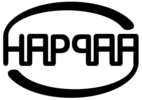Collaborative Research Centre SFB 1330 Hearing Acoustics (HAPPAA)
SFB HAPPAA
The Collaborative Research Centre (Sonderforschungsbereich) SFB 1330 "Hearing Acoustics: Perceptive Principles, Algorithms and Applications" (HAPPAA for short) has set itself the goal of exploring the principles of speech communication in detail and of promoting the communication skills of the population due to improved hearing aids.
Since 2018, the SFB is funded by the German Research Foundation (Deutsche Forschungsgemeinschaft, DFG) and is currently in the second funding period (2022-2026).
Coordinator of the SFB is the psychoacoustician Prof. Dr. Volker Hohmann.
Challenges of speech communication
Human speech communication is the foundation of our culture and key to active participation in society. It is challenged by a number of factors, such as complex acoustic backgrounds in social gatherings, complex room acoustics, ubiquitous noise and reverberation, as well as hearing impairment, which limit the capability of individuals to achieve their communication goals in daily-life environments.
Electroacoustic hearing aids
Current electroacoustic devices that support acoustic communication in these situations provide only a limited benefit, mostly because the interrelation of these challenging factors, the device function and the individual performance are not well understood.
In particular, passive listening is assumed in the design of current devices, whereas real-life communication involves active listening by, e.g., positioning both ears of the user in an optimum way, thus anticipating the complex dynamically changing environment and acting appropriately. Hence, human acoustic communication involves a loop that includes the sound field, the device, the perception of the user and its activity.
The acoustic communication loop
The collaborative research centre (CRC) goes well beyond earlier research by systematically investigating this acoustic communication loop, and taking it into account for auditory modeling as well as for hearing device development and evaluation.
The CRC aims at a fundamentally better quantitative understanding of the principles underlying the processing of complex auditory scenes by humans, the im-plementation of this knowledge in algorithms for perceptual enhancement of acoustic communication, and the evaluation of these algorithms for different applications in consumer electronics, assistive listening devices and hearing devices.
In addition, novel lab-based subject-in-the loop assessment procedures will be established using virtual acoustics, which ensure ecological validity of the results, i.e., functioning of the systems in a wide range of real-life environments of different acoustic complexity.
Multidisciplinarity
To achieve these goals, the CRC links the different disciplines that contribute to the research field, i.e., acoustics, psychoacoustics, audiology, engineering and physical modelling. The envisaged output, i.e., better support by electroacoustic devices of speech communication in real life, better principles of man-machine interaction with consumer electronics, and an extensive basis for improved construction and assessment of hearing devices, is highly relevant to our (ageing) communication society.


